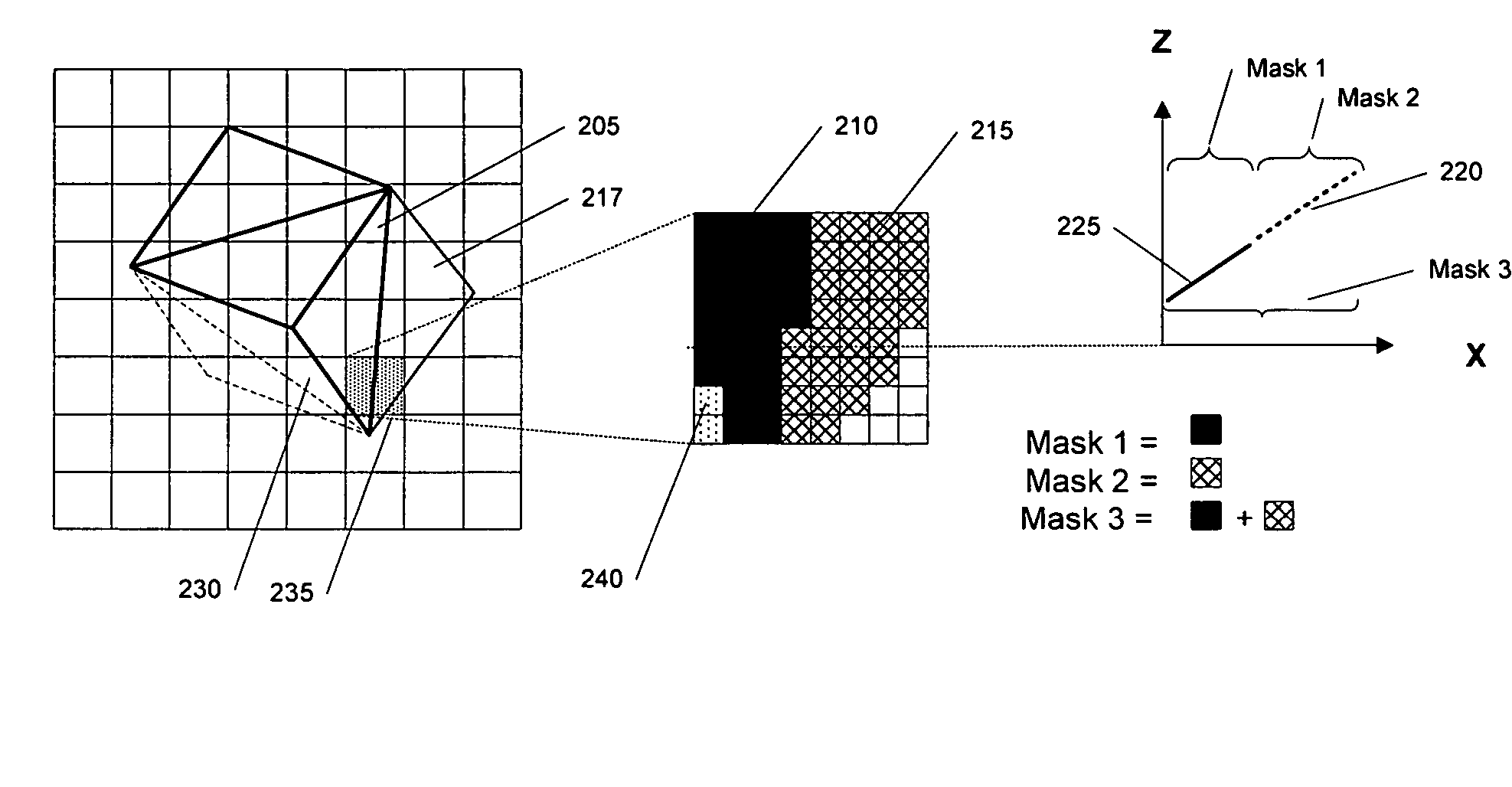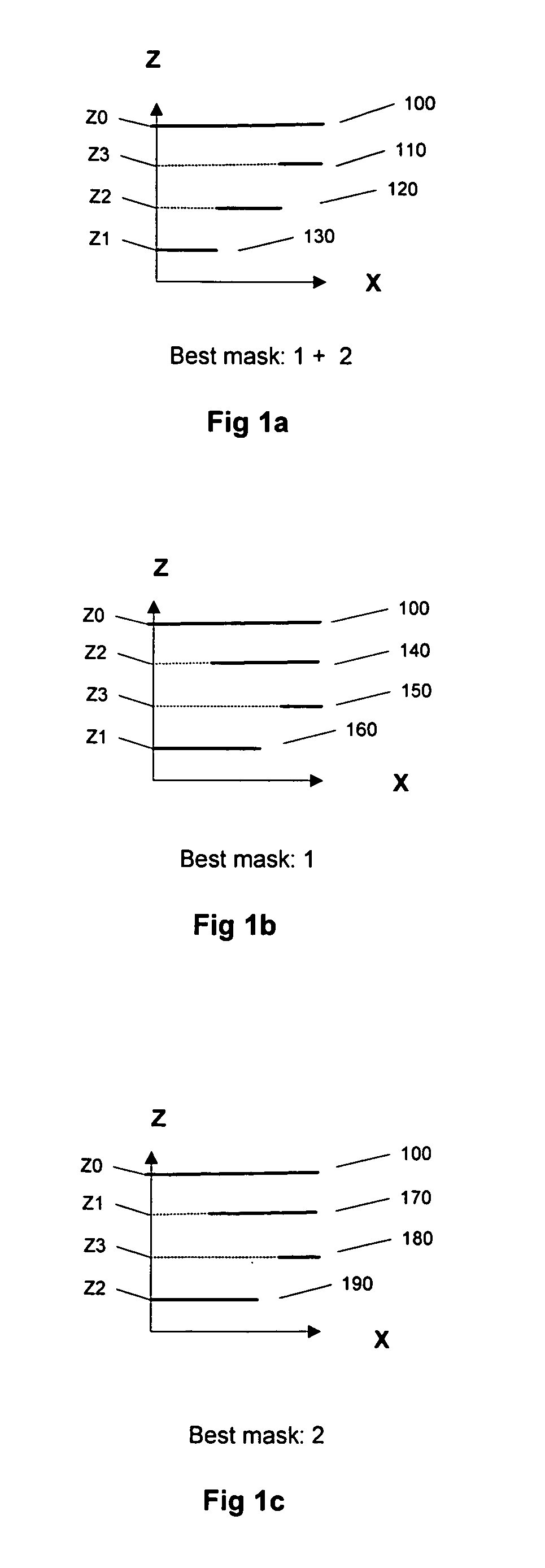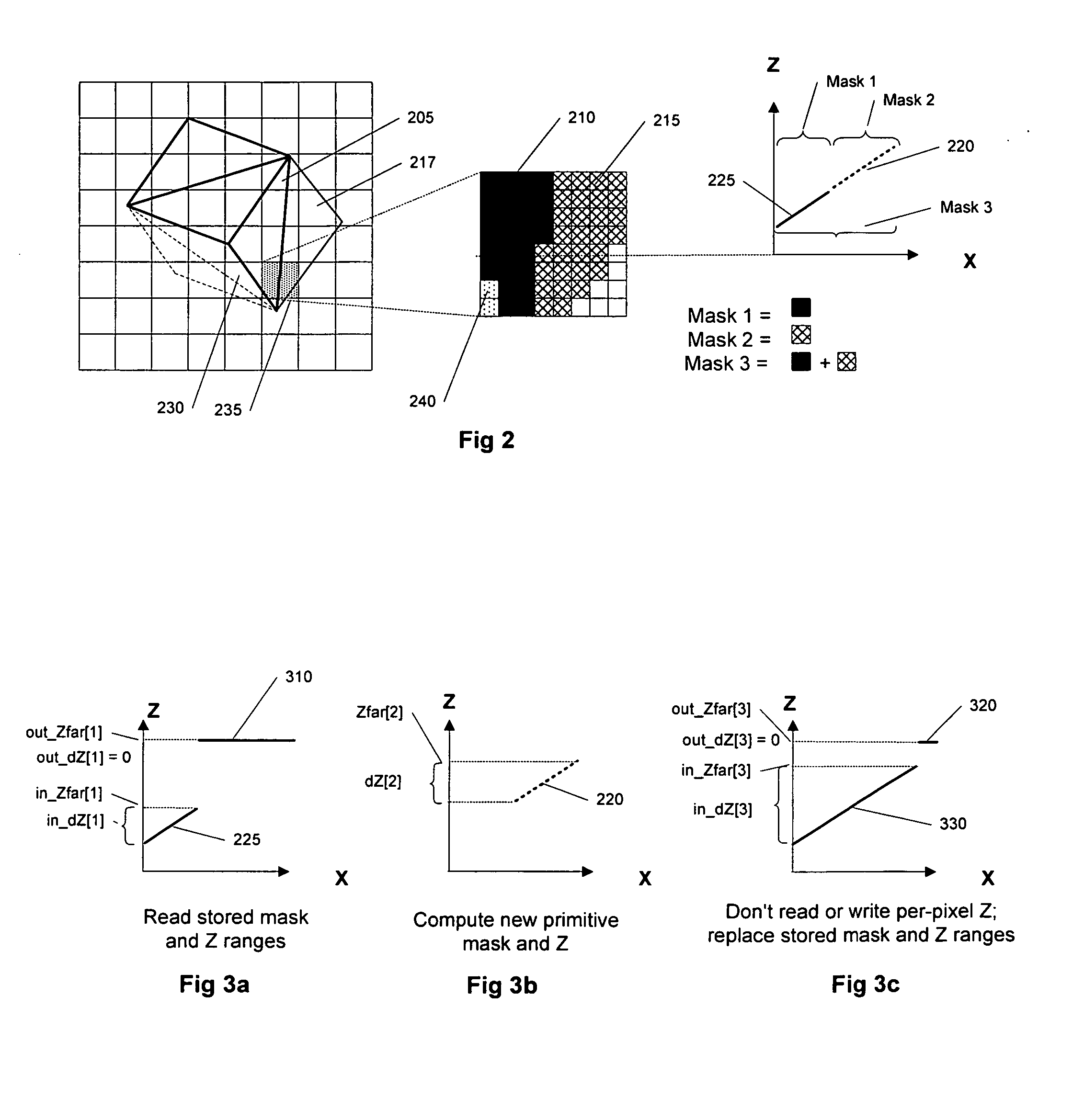Method and apparatus for occlusion culling of graphic objects
a technology of occlusion culling and graphic objects, applied in the field of computer graphics systems, can solve the problems of limiting the performance of modern 3d graphics accelerators, reducing only the z read bandwidth, and leaving the write bandwidth unaltered, and achieve the effect of maximizing the bandwidth savings for z read
- Summary
- Abstract
- Description
- Claims
- Application Information
AI Technical Summary
Benefits of technology
Problems solved by technology
Method used
Image
Examples
Embodiment Construction
[0069] A method of occlusion culling of graphic objects according to a preferred embodiment is illustrated, wherein the method is initiated by analyzing different combinations of the coverage masks and depth ranges of the triangles covering the same region and applying the present invention to obtain an optimal coverage mask and depth range update under different scenarios.
[0070] Before the evaluation of the visibility of a primitive covering a pre-defined region, the mask and one or more depth values associated with areas inside and outside the first mask are stored for the same region, wherein the pre-defined region can be a 4 by 4, 8 by 4 or 8 by 8 tile in the screen space. Visibility evaluation begins after the computation of the coverage mask of the primitive in the pre-defined region, which will later be referred to as the second mask, and the computation of one or more depth values representing the pixels of the primitive, for example, computing the exact depth value for eve...
PUM
 Login to View More
Login to View More Abstract
Description
Claims
Application Information
 Login to View More
Login to View More - R&D
- Intellectual Property
- Life Sciences
- Materials
- Tech Scout
- Unparalleled Data Quality
- Higher Quality Content
- 60% Fewer Hallucinations
Browse by: Latest US Patents, China's latest patents, Technical Efficacy Thesaurus, Application Domain, Technology Topic, Popular Technical Reports.
© 2025 PatSnap. All rights reserved.Legal|Privacy policy|Modern Slavery Act Transparency Statement|Sitemap|About US| Contact US: help@patsnap.com



